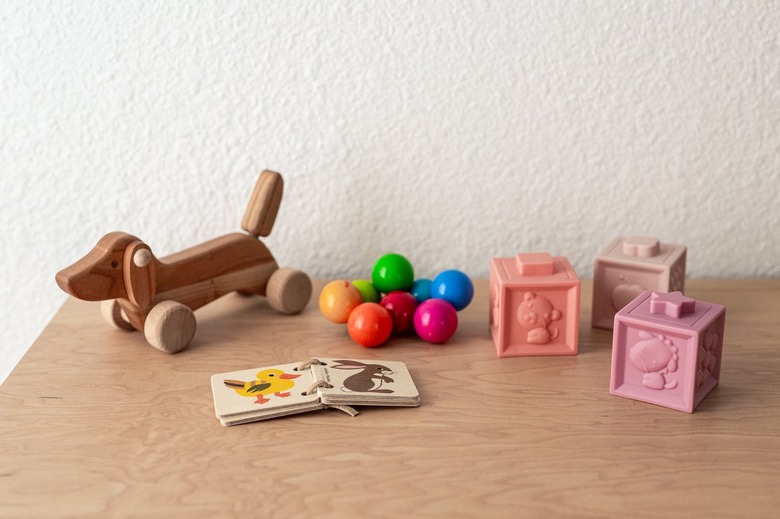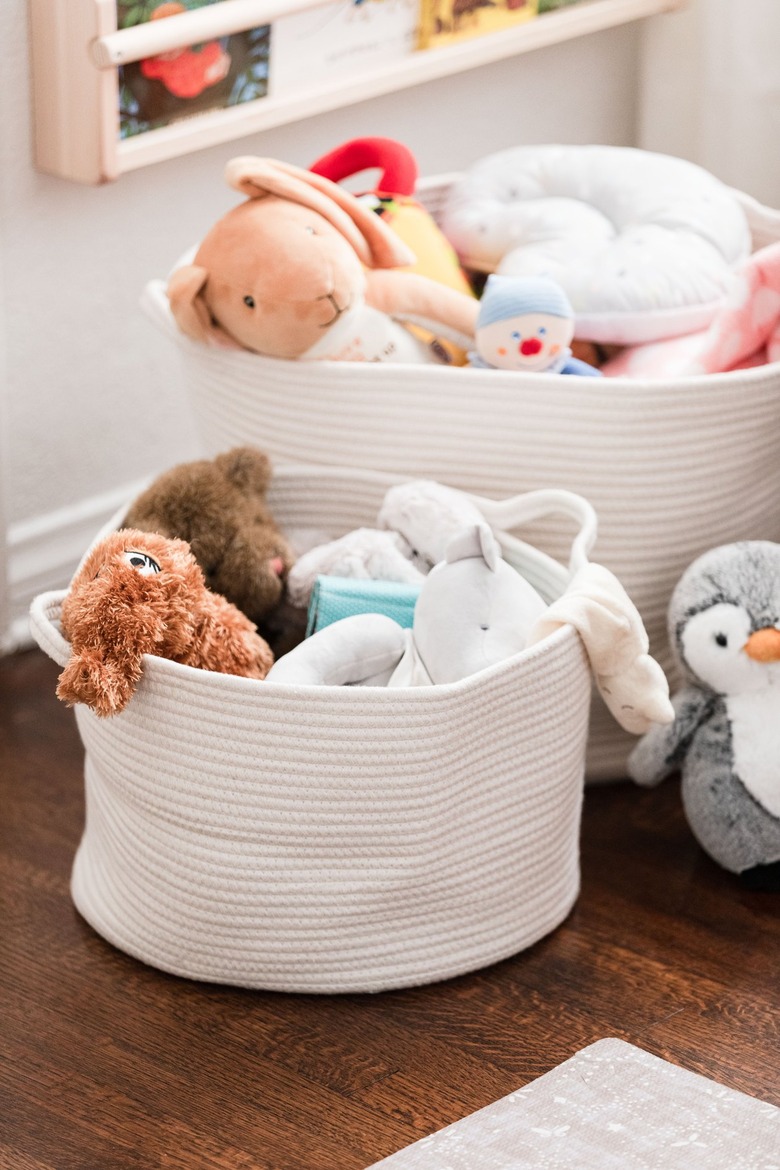How To Use 'Toy Rotation' To Handle Your Kid's New Holiday Gifts
While gift giving is often one of the most enjoyable parts of the holiday season, the influx of new toys can create a bit of a headache for both parents and children. If you're the type of household to have everything neat and tidy (or if you want to be that type of household), consider implementing toy rotation — not only to keep your home organized, but also to keep your kids stimulated by their growing collection.
Never heard of toy rotation? You're not alone. That's why we've spoken to the experts to learn about the idea and how it can help your family out post-holidays, after all the presents have been opened.
What is toy rotation?
What is toy rotation?
At its core, toy rotation is a method of storing children's toys. "It involves simplifying the number of toys children have access to at any given time," Deborah Farmer Kris, a child development expert and founder of Parenthood365, tells Hunker. So rather than putting all of the toys out in a playroom or area, you'd select a handful at a time, with the rest placed in easily accessible storage. After awhile, rotate the selection, taking some toys out of storage and placing other ones into it."
Why is toy rotation important for child development?
Why is toy rotation important for child development?
"Just like adults need variety, children do, too," parent coach and early childhood specialist Ann McKitrick of Nurtured Noggins tells Hunker. "They get bored with the same things to play with every day. And since they learn through play, providing variety is more stimulating and supports development in every area."
Rather than buying your kids new toys every time they get bored with what they have at home, you can rotate their existing toys to provide novel experiences instead. "When you pull out a toy they love but haven't played with in a while, you might hear them exclaim, 'I remember this! I love this game,'" says Kris. "And because a few weeks or months have passed, you may discover that they are playing with it in new, creative ways or with greater sophistication."
Toy rotation also helps reduce decision fatigue, a well-documented phenomenon in which being provided with too many choices can actually be more overwhelming and stressful than being provided with fewer options. "Sometimes it's harder to find something you want to eat on a 20-page menu than on a one-page menu," says Kris. The same concept holds true for children as they decide which toys to play with — toy rotation streamlines decision making, since there are fewer toys from which to choose.
Of course, another added bonus is that toy rotation helps reduce the clutter in your home. Just be sure to have some solid storage solutions for the toys that are not out on display, like labeled bins in a closet or on a shelf that a child can't reach.
How should you implement toy rotation in your own home?
How should you implement toy rotation in your own home?
There are no strict rules when it comes to toy rotation, and you can vary your methodology to suit your family's needs. But in general, it's best to "rotate a few toys at a time, so there are always familiar toys plus a couple that they haven't seen for a while," suggests McKitrick. She also recommends setting a regular schedule for rotation. "Maybe the first week of each month you'll put away a few toys and pull some new ones out of the closet. Biweekly or monthly is a great goal," she adds.
As for which toys to swap out during each cycle, pay attention to what your child seems to enjoy playing with most. "Don't be dictatorial about it — don't take away a favorite stuffy or block set that gets regular use," says Kris. "Instead, start with toys that your kids haven't played with in a long time and leave favorites, then add a few items you think they'll like that have been buried in the back of the toy closet."
While you're observing, you'll also likely glean which toys might have run their lifespan. "Use the process of rotation as a means to filter out toys that are not working," McKitrick recommends, "either because they literally are not working anymore because parts are missing or broken, or because your child is no longer interested." If your child has moved on from a toy, it's time to consider donating it or placing it in more permanent storage to be given to a younger relative down the line.

